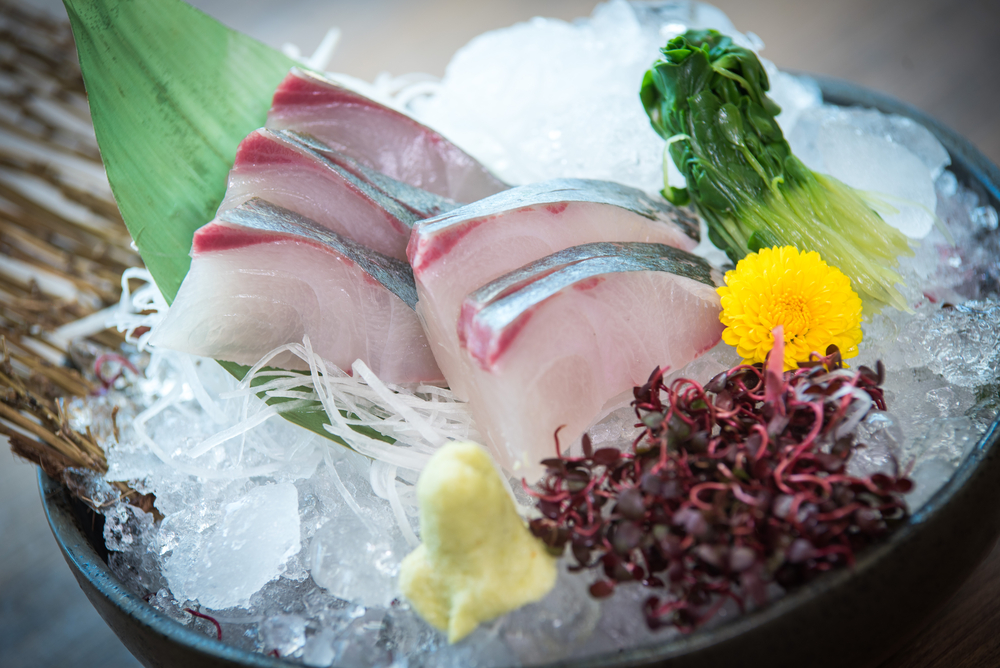The allure of sashimi lies in its pure, unadulterated taste—a reflection of the ocean’s depth and richness. In Palau, with its azure waters teeming with marine life, sashimi emerges as a culinary masterpiece, echoing the islands’ respect for nature and tradition.
Palau: An Oceanic Eden
With its intricate tapestry of coral reefs, marine lakes, and expansive oceanic stretches, Palau is a haven for marine biodiversity. This oceanic eden provides an array of fish that are not only vital to the ecosystem but also central to the Palauan culinary experience.
The Art and Ritual of Sashimi in Palau
In Palau, sashimi is not just food—it’s an art form and a ritual. The precision in slicing, the aesthetics of presentation, and the reverence for the ingredient reflect the deep cultural ties and the islanders’ appreciation for the sea’s gifts.
Key Ingredients and Preparation
- Fresh fish (like tuna, snapper, or mackerel) – 500 grams, sashimi-grade
- Soy sauce – for dipping
- Wasabi or local hot peppers – for added heat
- Freshly grated radish (daikon) or local garnishes – for presentation and palate cleansing
Preparation Insights:
– The fish must be extremely fresh, ideally caught the same day.
– The slices should be consistent, neither too thick nor too thin, allowing the consumer to appreciate the fish’s texture and flavor.
Slicing and Serving Tips
- Cleaning the Fish: Ensure the fish is cleaned and the skin is removed. Use a very sharp knife, preferably a sashimi knife.
- Slicing: Hold the fish firmly and slice at a slight angle, using a single smooth motion without sawing. The aim is to achieve clean, neat slices.
- Presenting: Arrange the slices elegantly on a plate. Typically, sashimi is presented on banana leaves in Palau, but a chilled plate will also suffice. Garnish with radish or local edible flowers and leaves.
- Serving: Serve immediately with soy sauce on the side for dipping. Wasabi or finely chopped local hot peppers can be added to the soy sauce for a spicy kick.
Sashimi: A Window to Palauan Traditions
In every slice of sashimi, one tastes the essence of Palau—an intertwining of nature, culture, and tradition. It’s a culinary ritual that transcends generations, paying homage to the ocean’s vastness and the island’s enduring legacy.

Concluding Remarks
Sashimi, in its elegant simplicity, captures the heartbeat of Palau. As you indulge in its flavors, you’re transported to the tranquil waters of the Pacific, surrounded by the whispers of palm trees and the rhythm of the waves—a true Palauan embrace.
Frequently Asked Questions (FAQs)
- Can I use other seafood for sashimi?
- Absolutely! While fish like tuna are popular, sashimi can also be made with other seafood like octopus, scallops, or even certain types of seaweed, depending on freshness and availability.
- How do I know if the fish is sashimi-grade?
- Sashimi-grade fish should be extremely fresh, often flash-frozen to kill parasites. When buying, ensure it’s from a reputable source, and the fish has a clean, oceanic smell—not fishy.
- What are some traditional Palauan accompaniments to sashimi?
- Beyond the common accompaniments like soy sauce, in Palau, sashimi might be paired with local condiments, fermented products, or even fruits to enhance the tasting experience.
The Palauan Sashimi celebrates the ocean’s bountiful harvest. Dive deeper into the ocean of flavors with our encyclopedia of Oceania foods.
